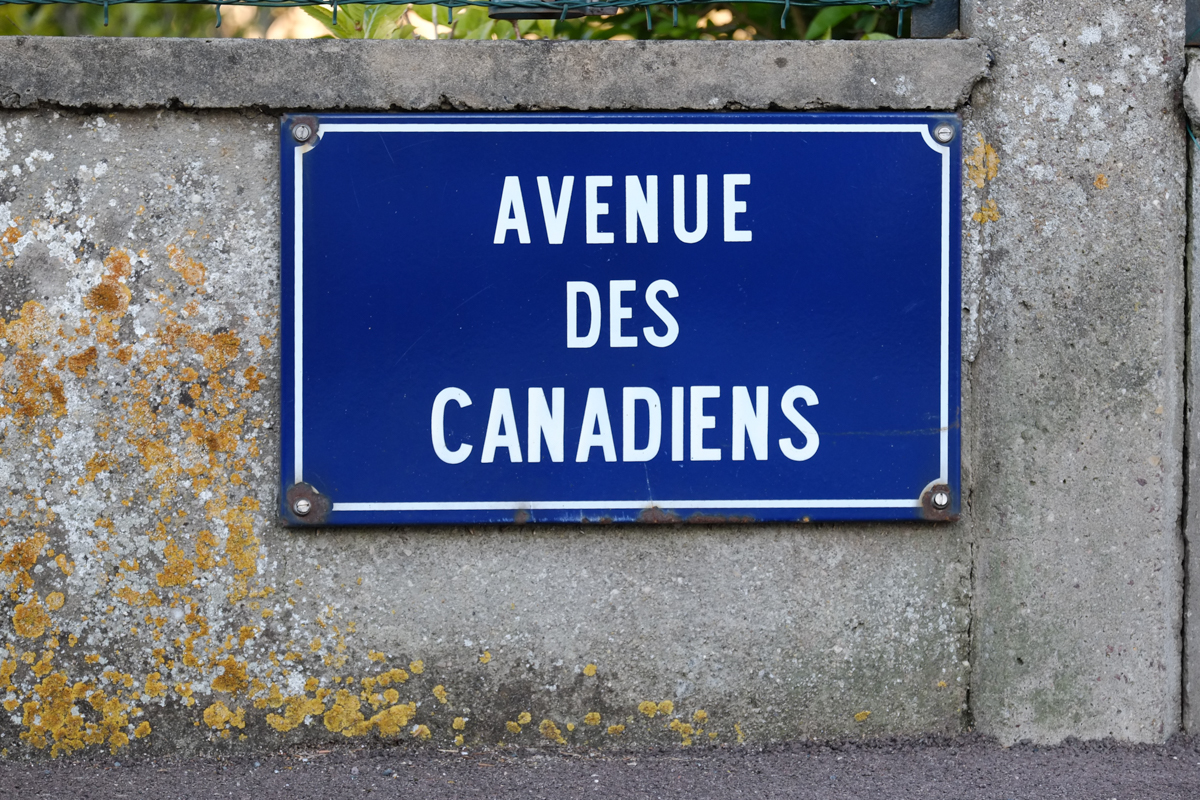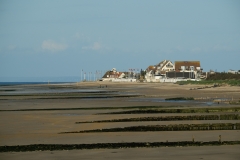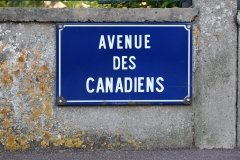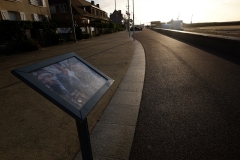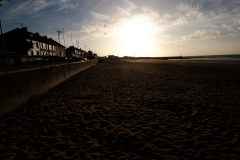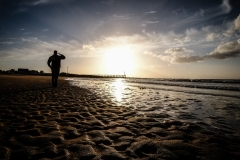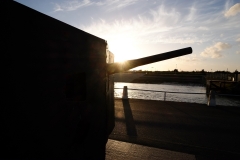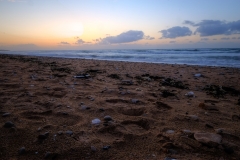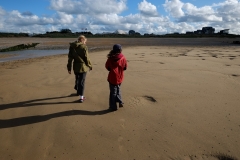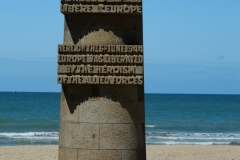Seventy one years after that fateful day it is hard to imagine what happened here.
To my left, there is a large house-size concrete box, it is tipped almost on it’s side.
Behind it is a building with several Canadian flags, and the village of Courseulles-sur-Mer.
In the village, there is a small monument, and a World War 2 vintage Canadian Tank.
Years ago this beach was called called Juno Beach.
I walk across the beach towards the ocean.
The sand is soft, with patterns sculpted by the tides.
I walk quietly over the sand, the silence broken only by the
soft crunching of sea shells under by shoes.
Seventy one years ago, there were many, many more sounds on this beach.
Sounds of gunfire, sounds of explosions, sounds of pain and the silent sound of death.
On that fateful day seventy one years ago,
Canadian Soldiers disembarked from small thinly armoured ships.
There was no shelter, no place to hide.
The Germans were well prepared and well defended, with large cannons inside the concrete boxes, machine guns, minefields and beach obstacles.
Many of these small ships were blown to pieces by the German guns
that were inside the large concrete boxes.
Other ships were blown to pieces after hitting explosives buried in the sand.
Some ships carried armoured tanks with canons to destroy the german guns.
Many of these tanks were destroyed by the German guns.
For the Canadian Soldiers that arrived on that beach on June 6th, 1944 –
It was Hell.
This is a piece of twisted and rusted metal that I found on the beach.
Was it a piece of one of those small thinly armoured ships that brought the Canadian Soldiers to the beach?, or was it a piece of a destroyed German cannon ?
Without specialized testing of its metallic properties – we will never know.
The jagged edges and bent shape of this small piece of metal are a silent witness of what happened on that fateful day seventy one years ago.
Hundreds of Canadian Soldiers died on this very beach, on fateful day, and hundreds more before the war was over.
This small piece of rusty jagged metal is my piece of Remembrance of all those Canadian soldiers that came ashore on this very beach and also all the other soldiers, sailors and airmen from from Canada, United Kingdom, US, Australia, Belgium, Czechoslovakia, France, Greece, the Netherlands, New Zealand, Norway and Poland that participated in D-day and liberated Europe.
